|
|
|
|
|
FIE 高温梯级储热结构的二氧化碳储能系统:热力学本征循环构建与性能分析 |
|
|
论文标题:A carbon dioxide energy storage system with high-temperature graded heat storage structure: Thermodynamic intrinsic cycle construction and performance analysis
期刊:Frontiers in Energy
作者:Jiahao Hao , Pingyang Zheng , Yanchang Song, Zhentao Zhang , Junling Yang , Yunkai Yue
发表时间:15 Apr 2025
DOI:10.1007/s11708-025-0995-3
微信链接:点击此处阅读微信文章
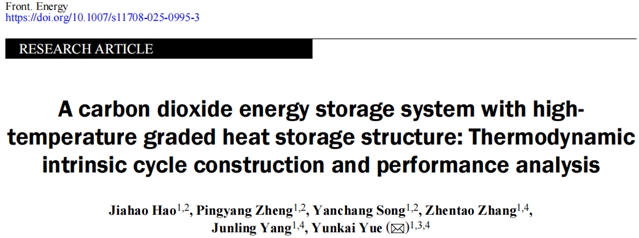
文章简介
二氧化碳储能技术作为大规模长时储能的重要路径,其系统循环效率与热力学性能优化是当前研究的核心挑战。本文提出了一种基于高温分级储热结构的二氧化碳储能(CES)系统,通过构建热力学本征循环模型与性能预测方法,揭示了系统参数耦合机制。
研究背景及意义
随着新能源装机容量持续增长,大规模长时储能技术成为实现碳中和目标的关键。传统技术如抽水蓄能、压缩空气储能等受限于地理条件、技术成熟度及效率瓶颈,难以满足电网灵活性需求。二氧化碳储能(CES)因其高效率、无地理限制及安全可控等优势备受关注,但其热力学机制尚未明晰,尤其在热存储结构优化与循环效率边界界定方面存在显著不足。现有研究多聚焦单一储热介质或局部参数优化,缺乏对系统热力学本征循环的全局描述。本文提出了分级储热结构与热力学本征循环构建方法,旨在突破CES系统循环效率的上限。
主要研究内容
研究设计了一种包含四级储热单元的CES系统(图1),采用熔盐、导热油、加压水及常温水作为储热介质,覆盖270–590℃温域。系统通过单级宽压差压缩/膨胀设计提升储热温度上限,并结合分级储热降低传热温差损失。在热力学建模中,基于不可逆修正的卡诺-布雷顿循环构建本征循环模型(图2),提出极限效率与工质损失效率的计算方法。理论分析表明,压缩机排气温度(TH)与过程温差(ΔTTotal)是影响循环效率的核心参数。
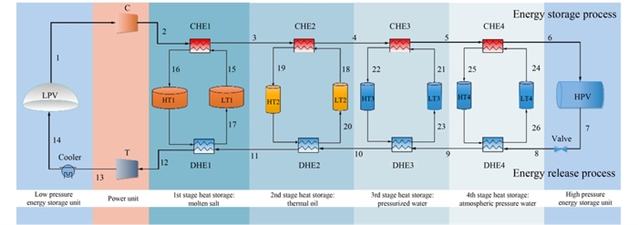
图1 高温分级储热结构的CES系统示意图

图2 单级压缩与膨胀CES系统的基本热力学过程
通过数值模拟验证,典型工况下系统压缩机出口压力为6.8 MPa,涡轮入口温度达704.2 K,热利用效率达95.9%。性能分析显示,总压比(πC)与循环效率呈正相关,当压比从5.6提升至9.2 MPa时,理论极限效率增长约7.2%(图3)。此外,传热温差每增加5 K,系统效率下降约4.3%,而换热器效率提升至0.9以上可使循环效率提高2.3%(图4)。环境温度对系统影响呈现矛盾性:尽管高温环境理论上通过提升储热温度增加极限效率(73.07%→73.34%),但实际循环效率因压缩机等熵效率降低而下降(77.03%→75.80%),需结合工况动态调整参数(图4)。
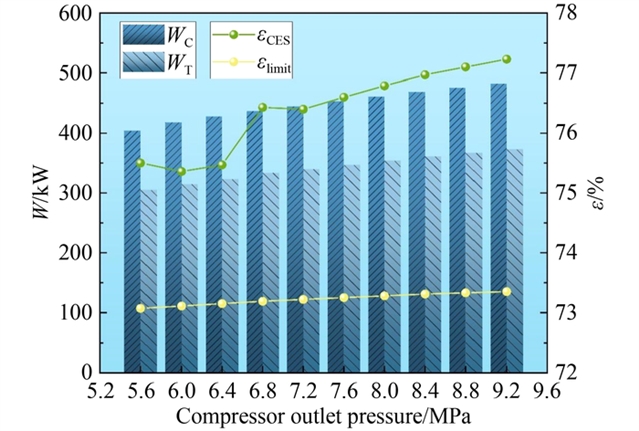
图3 总压比对循环效率和理论极限效率的影响
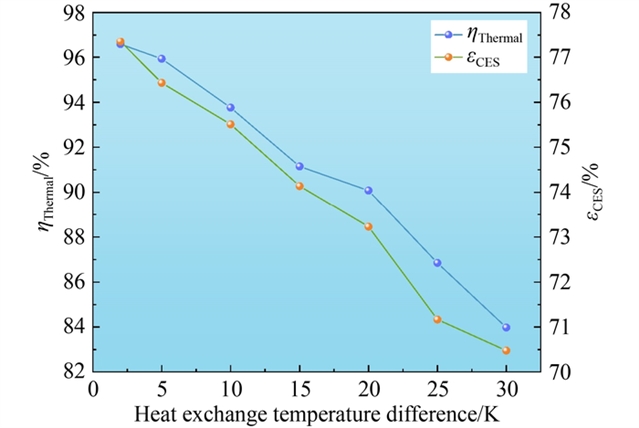
图4 换热温差对系统循环效率与热利用效率的影响
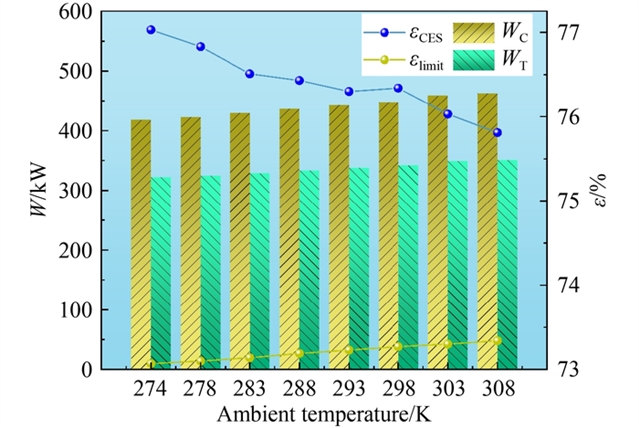
图5 环境温度对系统性能的影响
对比同类系统,本系统在高压储罐压力(6.8 MPa)低于文献值(8.0–24.8 MPa)的条件下,循环效率提升至76.4%,较相关文献所提出的液态二氧化碳储能系统(61.5%)与吸附型二氧化碳储能系统(70.8%)更具技术经济性。然而,低压气体储罐容积限制导致能量密度为0.16 kWh·m-3。
研究结论
研究结果表明,分级储热设计通过匹配多介质温域降低传热损失,而单级宽压差压缩策略可提升储热温度上限。参数分析明确了压比、换热温差及设备效率对性能的影响。未来需进一步验证压缩机与涡轮等关键设备在高温高压下的实际性能。
原文信息
A carbon dioxide energy storage system with high-temperature graded heat storage structure: Thermodynamic intrinsic cycle construction and performance analysis
Jiahao Hao1,2, Pingyang Zheng1,2, Yanchang Song1,2, Zhentao Zhang1,4, Junling Yang1,4, Yunkai Yue1,3,4
Author information:
1. Technical Institute of Physics and Chemistry, Chinese Academy of Sciences, Beijing 100190, China
2. University of Chinese Academy of Sciences, Beijing 100049, China
3. Changsha Borui Energy Technology Co., Ltd., Changsha 410205, China
4. Research Institute of Energy Storage Industrial Technology of Hebei Province, Shijiazhuang 050051, China
Abstract:
Carbon dioxide energy storage (CES) is an emerging compressed gas energy storage technology which offers high energy storage efficiency, flexibility in location, and low overall costs. This study focuses on a CES system that incorporates a high-temperature graded heat storage structure, utilizing multiple heat exchange working fluids. Unlike traditional CES systems that utilize a single thermal storage at low to medium temperatures, this system significantly optimizes the heat transfer performance of the system, thereby improving its cycle efficiency. Under typical design conditions, the round-trip efficiency of the system is found to be 76.4%, with an output power of 334 kW/(kg·s-1) per unit mass flow rate, through mathematical modeling. Performance analysis shows that increasing the total pressure ratio, reducing the heat transfer temperature difference, improving the heat exchanger efficiency, and lowering the ambient temperature can enhance cycle efficiency. Additionally, this paper proposes a universal and theoretical CES thermodynamic intrinsic cycle construction method and performance prediction evaluation method for CES systems, providing a more standardized and accurate approach for optimizing CES system design.
Keywords:
carbon dioxide energy storage (CES); high-temperature graded heat storage; thermodynamic intrinsical cycle construction; performance analysis
Cite this article:
Jiahao Hao, Pingyang Zheng, Yanchang Song, Zhentao Zhang, Junling Yang, Yunkai Yue. A carbon dioxide energy storage system with high-temperature graded heat storage structure: Thermodynamic intrinsic cycle construction and performance analysis. Front. Energy,
https://doi.org/10.1007/s11708-025-0995-3
扫描二维码,阅读原文

期刊简介
Frontiers in Energy是中国工程院院刊能源分刊,高教社Frontiers系列期刊之一。由中国工程院、上海交通大学和高等教育出版社共同主办。翁史烈院士和倪维斗院士为名誉主编,中国工程院院士黄震、周守为、苏义脑、彭苏萍担任主编。加拿大皇家科学院、加拿大工程院、中国工程院外籍院士张久俊,美国康涅狄格大学校长、教授Radenka Maric,上海交通大学教授Nicolas Alonso-Vante和巨永林担任副主编。
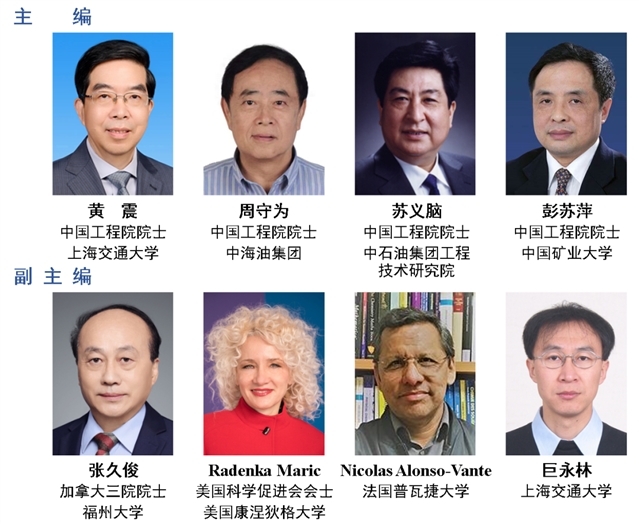
Frontiers in Energy已被SCIE、Ei Compendex、CAS、Scopus、INSPEC、Google Scholar、CSCD(中国科学引文数据库)、中国科技核心期刊等数据库收录。2024年海内外下载量为110余万,截至2025年03月03日,即时Impact Factor为6.0,即时CiteScore为6.8。
Frontiers in Energy免收版面费,且对于录用的文章提供免费语言润色以保障出版质量。进入外审的稿件(不包括评论、新闻热点等短文),第一轮审稿周期约30天,从审稿到录用平均60天。
更多信息请访问:
http://journal.hep.com.cn/fie(国内免费开放)
https://link.springer.com/journal/11708
联系我们:
FIE@sjtu.edu.cn, (86) 21-62932006
qiaoxy@hep.com.cn, (86) 10-58556482

《前沿》系列英文学术期刊
由教育部主管、高等教育出版社主办的《前沿》(Frontiers)系列英文学术期刊,于2006年正式创刊,以网络版和印刷版向全球发行。系列期刊包括基础科学、生命科学、工程技术和人文社会科学四个主题,是我国覆盖学科最广泛的英文学术期刊群,其中12种被SCI收录,其他也被A&HCI、Ei、MEDLINE或相应学科国际权威检索系统收录,具有一定的国际学术影响力。系列期刊采用在线优先出版方式,保证文章以最快速度发表。
中国学术前沿期刊网
http://journal.hep.com.cn

特别声明:本文转载仅仅是出于传播信息的需要,并不意味着代表本网站观点或证实其内容的真实性;如其他媒体、网站或个人从本网站转载使用,须保留本网站注明的“来源”,并自负版权等法律责任;作者如果不希望被转载或者联系转载稿费等事宜,请与我们接洽。